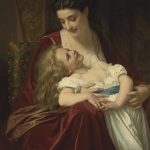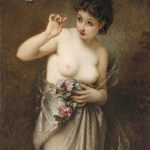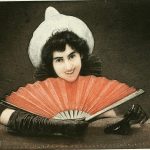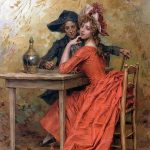Édouard Bisson (1856-1939) was a French artist renowned for his exquisite portrayals of allegorical and mythological themes, as well as his captivating images of feminine beauty. Born in Paris, Bisson was deeply embedded in the artistic traditions of the late 19th and early 20th centuries, navigating the realms of Academic art with a distinctive flair that highlighted both his technical prowess and his imaginative vision.
Trained at the École des Beaux-Arts in Paris, Bisson was under the tutelage of notable figures such as Alexandre Cabanel, a leading exponent of French Academic art. This education steeped him in the classical traditions of painting, emphasizing meticulous technique, and the idealized representation of subjects. Bisson’s early career was marked by his adherence to these principles, earning him accolades and recognition, including medals at the Paris Salons, where he exhibited regularly.
Bisson’s oeuvre is characterized by its romanticism and sensuality, with a particular focus on the female form. His paintings often depict ethereal women in lush, dreamlike settings, embodying ideals of beauty and fantasy that appealed to the tastes of his era. Works such as “The Fairy of the Flowers” and “The Beauty” showcase his ability to blend realism with a sense of enchantment, creating scenes that transcend the mundane to evoke a world of timeless allure.
Despite his alignment with the Academic tradition, Bisson’s work also reflects a personal interpretation that lends his subjects a distinctive charm and vitality. His use of color, light, and texture contributes to the immersive quality of his paintings, inviting viewers into a realm where myth and reality merge. Bisson’s depictions of nymphs, goddesses, and allegorical figures are imbued with a sense of narrative depth, suggesting stories beyond the canvas’s confines.
In addition to his mythological and allegorical subjects, Bisson also explored portraiture, applying his refined technique and sensitivity to the depiction of individual character. Though less known than his fantastical scenes, these works further demonstrate his versatility and keen eye for detail.
The turn of the century saw shifts in artistic tastes and the rise of modernist movements that challenged the conventions of Academic art. While Bisson’s style remained largely consistent throughout his career, his work embodies the tension between tradition and the burgeoning forces of innovation. His dedication to beauty and craftsmanship resonated with those who sought refuge from the rapid changes of the time, offering a vision of art as a bastion of harmony and idealism.
Édouard Bisson’s legacy is that of an artist who masterfully navigated the expectations of his era while infusing his work with a personal sense of elegance and fantasy. In the context of art history, his paintings stand as testaments to the enduring appeal of classical ideals, even as the art world around him evolved. Today, Bisson’s work is celebrated for its technical excellence and its ability to evoke a sense of wonder, capturing the imagination of contemporary audiences just as it did over a century ago.
Bisson’s contributions to art were recognized in his lifetime through awards and honors, and his paintings continue to be appreciated by collectors and enthusiasts of 19th-century art. In a time marked by rapid change and the questioning of traditional values, Bisson’s work offers a reminder of the power of beauty and craftsmanship to transcend the ages, ensuring his place in the annals of art history as a keeper of the flame of classicism and romanticism.






